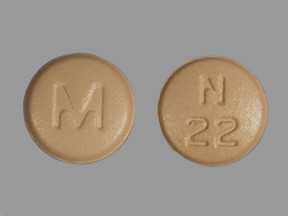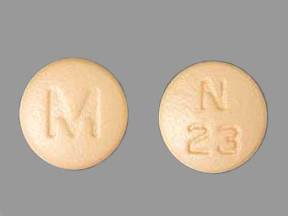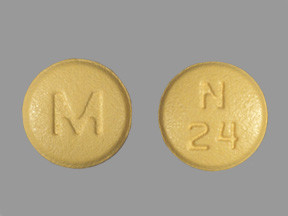NISOLDIPINE (10, 20, 30, OR 40 MG) SUSTAINED ACTION - ORAL
PHONETIC PRONUNCIATION: (nye-SOL-di-peen)
COMMON BRAND NAME(S): Sular
GENERIC NAME(S): nisoldipine
Uses
USES: Nisoldipine is used with or without other medications to treat high blood pressure (hypertension). Lowering high blood pressure helps prevent strokes, heart attacks, and kidney problems. Nisoldipine is called a calcium channel blocker. It works by relaxing blood vessels so blood can flow more easily.
How to use NISOLDIPINE (10, 20, 30, OR 40 MG) SUSTAINED ACTION - ORAL
HOW TO USE: Take this medication by mouth, usually once daily or as directed by your doctor. Take this medication on an empty stomach or with a low-fat meal. Do not take within 1 hour before or 2 hours after a high-fat meal. Doing so may increase side effects. Do not crush or chew this medication. Doing so can release all of the drug at once, increasing the risk of side effects. Also, do not split the tablets unless they have a score line and your doctor or pharmacist tells you to do so. Swallow the whole or split tablet without crushing or chewing. This medication comes in different sustained-action forms with different strengths. Check with your doctor or pharmacist that you are taking the correct dose and form. Do not take a different strength or form without checking with your doctor or pharmacist first. Avoid eating grapefruit or drinking grapefruit juice while using this medication unless your doctor instructs you otherwise. Grapefruit can increase the amount of certain medications in your bloodstream. Consult your doctor or pharmacist for more details. The dosage is based on your medical condition and response to treatment. Your doctor may gradually increase your dose. Follow your doctor's instructions carefully. Use this medication regularly to get the most benefit from it. To help you remember, take it at the same time each day. It is important to continue taking this medication even if you feel well. Most people with high blood pressure do not feel sick. Tell your doctor if your condition does not improve or if it worsens (for example, your routine blood pressure readings remain high or increase).
Side Effects
Precautions
Interactions
Overdose
Images
Reviews
Faq for NISOLDIPINE (10, 20, 30, OR 40 MG) SUSTAINED ACTION - ORAL
Answer: Nisoldipine is a medication used to treat high blood pressure (hypertension). It belongs to a class of drugs called calcium channel blockers.
Answer: Nisoldipine works by relaxing and widening the blood vessels, allowing blood to flow more easily and lowering blood pressure.
Answer: Common side effects of Nisoldipine may include swelling in the ankles or feet, dizziness, headache, flushing, or fast heart rate. Contact your doctor if you experience more severe side effects such as fainting, severe dizziness, chest pain, or signs of liver problems.
Answer: Take Nisoldipine as directed by your doctor. It is usually taken once or twice a day. You may take it with or without food, but it's important to take it the same way each time.
Answer: It is not recommended to use Nisoldipine during pregnancy as it may harm the unborn baby. It is also not known if Nisoldipine passes into breast milk, so it's best to avoid it while breastfeeding. Consult your doctor for more information.
Answer: If you miss a dose, take it as soon as you remember. However, if it is close to the time for your next dose, skip the missed dose and resume your regular dosing schedule. Do not take a double dose to make up for a missed one.
Answer: Nisoldipine can interact with several medications, including certain antibiotics, antifungals, anti-seizure drugs, and other blood pressure medications. Inform your doctor about all the medications you are taking to prevent any potential drug interactions.
Answer: Nisoldipine may start lowering blood pressure within a few hours of taking the medication. However, it may take up to 4 weeks to experience the full benefits. Continue taking it as prescribed, even if you feel well.
Answer: Allergic reactions to Nisoldipine are rare but possible. Seek immediate medical attention if you experience symptoms such as rash, itching, swelling, severe dizziness, or difficulty breathing.
Disclaimer
IMPORTANT: HOW TO USE THIS INFORMATION: This is a summary and does NOT have all possible information about this product. This information does not assure that this product is safe, effective, or appropriate for you. This information is not individual medical advice and does not substitute for the advice of your health care professional. Always ask your health care professional for complete information about this product and your specific health needs.



No Reviews Yet